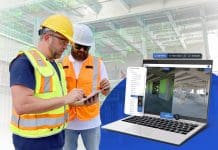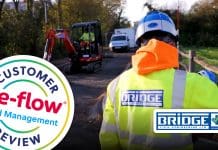Many BIM opportunities await for those willing to take the necessary steps, says Casey Rutland
Without meaning to play down the importance of any of the ‘levels’, BIM Level 1 as defined by the UK Government is broadly ‘consistently named documents, delivered in a controlled manner’.
The main difference between this and BIM Level 2 (the currently mandated level) is that we extend the consistency to ‘live data deliverables’ as well as traditional documentation. And instead of simply naming them consistently, we ‘structure’ them consistently too, engendering a new era whereby the construction industry ‘speaks the same language’. Not only that but where any contradictory information is supplied, the ‘model’ takes precedent. It’s a big shift and one that requires us to check and validate the information we deliver to ensure it can be reliably used by others in their processes. This is where the BIM opportunities lie and where a fundamental shift in our industry happens.
This approach isn’t necessarily adopted around the world. Whereas the UK approach is a commercially led one, supported by the relevant supply chain technology, other global regions focus on a technology-led approach with each engaged party reaping the benefits, but not necessarily able to share or harvest data from multiple projects. This approach is a tricky one to sell to clients.
There are clear benefits of both, but you can’t argue with the fact that a ‘whole business’ led approach will ultimately be more successful.
Add to this the desire to create structured data consistently across all sectors, disciplines or project types and voila!… you have the baseline of better communication, flexible use of data and opportunities to offer new services and better insight.
Scan data
Many of us working within BIM processes are familiar with the benefits of using scan data in our workflows with existing buildings or greenfield sites – BIM Level 2, and the supporting technology allows us to be more certain about decisions we are making at each and every stage, and often more affordable than traditional methods. What the BIM Level 2 process also calls for is ‘validation’ of what is built versus what was designed, and ultimately, the delivery of an as constructed model and data set. In fact PAS1192:2 specifically calls for the use of scan data to verify the as-built state.
David Southam, Regional Manager Sales EU North BIM/CIM & Product Design at FARO says: “This can be extended to a BIM Level 2 compliant approach whereby the use of survey technology allows us to capture asset information from existing buildings or infrastructure without necessarily involving any design work. This is a potentially huge, untapped market”.
To see how the survey team at contractor Costain have been using scan data on live projects to accelerate and improve its capture and sharing of field data by using FARO Focus 3D laser scanning and point-cloud technologies instead of topographical survey tools and data click here.
In summary, for BIM to succeed around the world, the real business benefits need to be extolled by those working within the process who also appreciate the bigger picture and how it fits with the economics of the industry. Technology alone won’t cut it; we need to enthuse and enable staff, satisfy the financials, change the culture to a more collaborative one and use technology and process to rid our archaic industry of the waste it has become far too used to.
The benefits and BIM opportunities are there to be had, so go grab them!
For more information on how laser scanning can benefit your company, please visit www.faro.com.
Author: Casey Rutland
Anke Abendroth
Regional Marketing Manager
FARO UK
anke.abendroth@faro.com
Please note: this is a commercial profile













